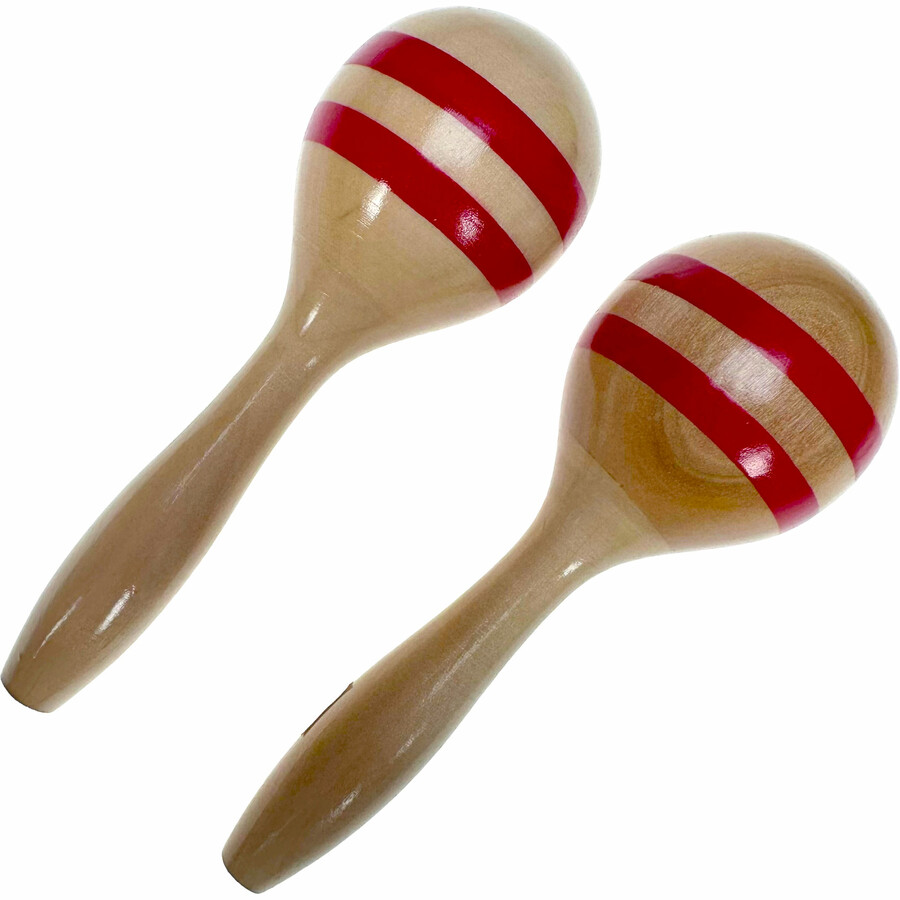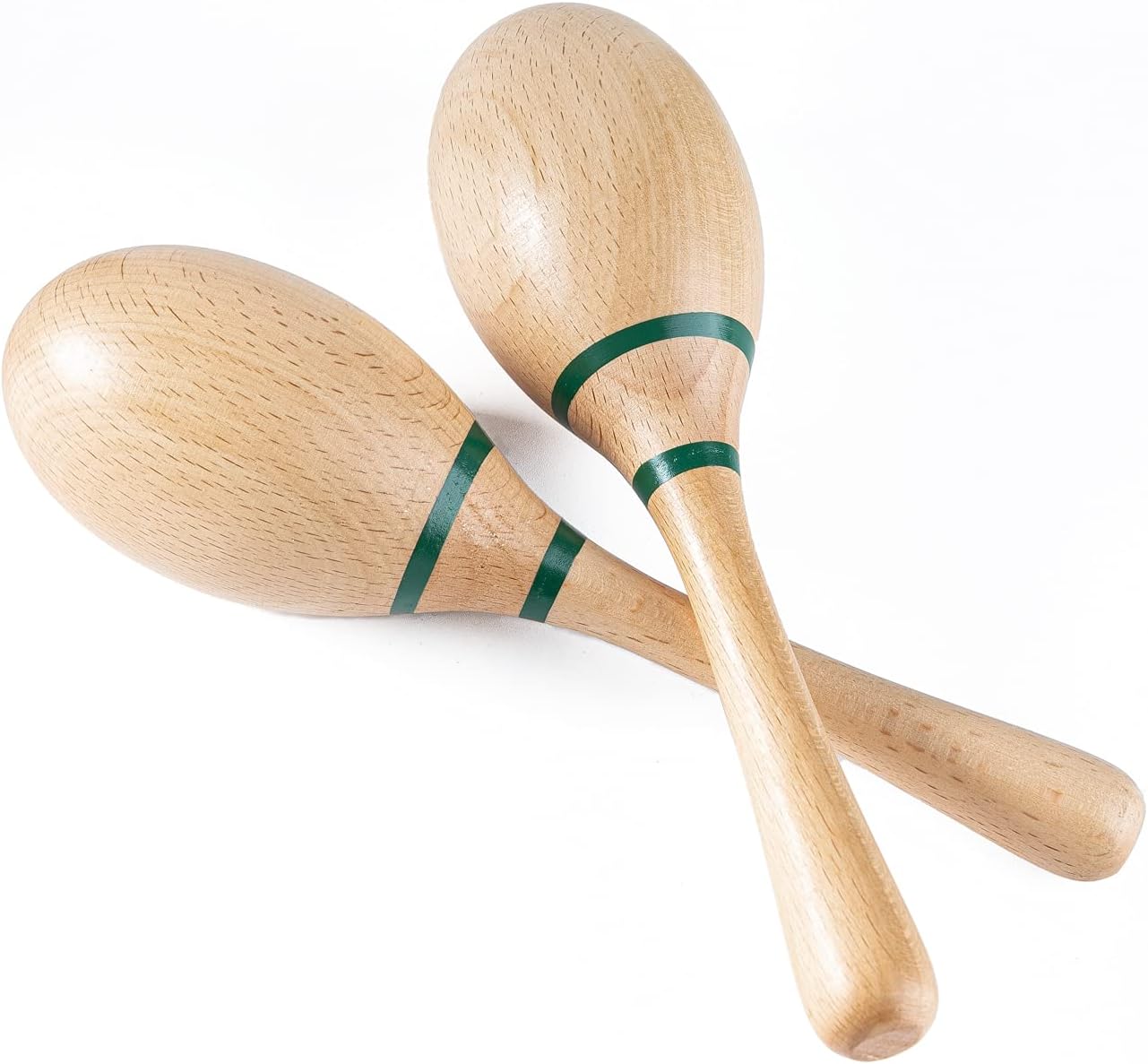Maracas
Percussions
America
Between 1001 and 1900 AD
Video
Maracas are a lively and essential percussion instrument that have become synonymous with Latin music and Caribbean rhythms. These instruments are typically made from hollowed-out gourds or other materials, filled with seeds or small pebbles, and played by shaking them in rhythm. Their bright, sharp sound adds a distinctive layer to various musical genres, making them a favorite among musicians and dancers alike.
Description and Features
The maraca is classified as a shaken idiophone, meaning it produces sound through the vibration of the instrument itself when shaken. Traditionally, maracas are crafted from dried calabash gourds, which are hollowed out and filled with small objects like seeds or beads. The exterior is often decorated with vibrant colors or intricate designs, reflecting the cultural heritage of the regions they come from.Maracas are usually played in pairs, one in each hand, allowing musicians to create complex rhythms and patterns. The sound produced can vary depending on the materials used for the filling and the construction of the maraca itself. For instance, maracas filled with beans may produce a softer sound, while those filled with pebbles can create a sharper, more pronounced rattle.In addition to their traditional forms, modern maracas can be made from plastic or wood, offering durability and consistent sound quality. They come in various sizes, allowing for different tonal ranges and playing styles. Musicians often choose specific types of maracas based on the musical genre they are performing.
History and Origin
The history of maracas dates back centuries and is deeply rooted in indigenous cultures of South America. The name “maraca” is derived from the Guaraní word “mbaracás,” which refers to rattles used in divination practices among Indigenous peoples. Historically, these instruments were used not only for musical purposes but also in spiritual rituals and healing ceremonies.Maracas were originally made from natural materials such as gourds or turtle shells and were often adorned with feathers or other decorative elements. They played a significant role in traditional dances and celebrations among various Indigenous groups across Latin America.As European colonization spread through the Americas, maracas were introduced to new regions and cultures. In particular, they became integral to Afro-Brazilian music styles like samba and capoeira, where they are used to enhance rhythmic patterns during performances. Over time, maracas found their way into mainstream Latin music genres such as salsa and merengue, solidifying their place as a staple percussion instrument.Today, maracas are celebrated worldwide for their lively sound and versatility across different musical styles. They have transcended their cultural origins to become popular in various genres beyond Latin music, including pop, rock, and jazz.
Working Mechanism
The working mechanism of maracas is straightforward yet effective. When played, the musician holds one maraca in each hand by gripping the handle or edges to allow for maximum vibration of the shell. By shaking them rhythmically, the contents inside collide against the walls of the gourd or shell, producing sound.Musicians can control the dynamics of their playing by adjusting the intensity of their shaking. A gentle shake will yield softer sounds suitable for background rhythm, while vigorous shaking creates louder sounds that can drive a performance forward. Additionally, players can incorporate different techniques such as rolling their wrists or tilting the maracas to create variations in tone and rhythm.The simplicity of playing maracas makes them accessible to musicians of all skill levels. They are often used as an introductory instrument for children learning about rhythm and percussion.
Types of Maracas
There are several types of maracas available today that cater to different musical styles and preferences:
Traditional Maracas: Typically made from dried gourds or calabash fruits filled with seeds or small stones. These instruments often feature colorful designs representative of their cultural origins.
Plastic Maracas: Modern versions made from durable plastic materials that provide consistent sound quality while being resistant to wear and tear.
Wooden Maracas: Crafted from wood with a hollow interior that produces a warm sound; these are often favored by musicians looking for a more traditional aesthetic.
Mini Maracas: Smaller versions designed for children or educational settings where portability is essential.
Each type serves different musical contexts and preferences among players.
Music Composed with Maracas
Maracas play an essential role in various musical genres across cultures. In traditional Latin American music, they provide rhythmic support for dances and celebrations. In Afro-Brazilian music styles such as samba and capoeira, maracas enhance the energy of performances by complementing other percussion instruments like drums.In contemporary music settings, maracas have been incorporated into jazz ensembles and world music groups. Their unique sound adds depth and texture to modern arrangements while allowing musicians to experiment with different rhythms.The versatility of maracas allows musicians to explore various styles creatively. They can be used in solo performances or as part of larger ensembles, making them an invaluable addition to any percussion section.
Significance of Maracas
The significance of maracas extends beyond their musical capabilities; they embody cultural identity and heritage. In many Latin American communities, playing maracas is not just about creating music; it’s about storytelling and preserving traditions through rhythm. The instrument fosters unity during celebrations and rituals, bringing people together in shared experiences.In educational contexts, learning to play maracas can promote cultural appreciation among students while enhancing their understanding of rhythm and percussion techniques. They serve as an excellent tool for introducing children to music due to their simple playing method. Moreover, as global interest in world music continues to grow, instruments like maracas play an important role in bridging cultural gaps and fostering cross-cultural understanding through shared musical experiences.
FAQ
What materials is the Maracas made of?
Maracas are traditionally made from natural materials such as hollow gourds, dried coconut shells, or wood. These shells are filled with seeds, beads, pebbles, or small stones, which create their distinctive rattling sound when shaken. A wooden or plastic handle is typically attached for ease of use. In modern production, maracas are often crafted from synthetic materials like plastic or fiberglass, offering durability and consistency in sound.
What's inside maracas?
Inside maracas are small, hard materials such as seeds, beads, pebbles, or dried beans. These materials move freely inside the hollow shell, typically made of wood, plastic, or gourd, creating a rhythmic shaking sound when the maracas are played. The choice of filling affects the instrument's tone and volume.
Who invented maracas?
Maracas were invented by indigenous peoples of Latin America, particularly in the regions of the Caribbean and South America. They were traditionally made from dried gourds filled with seeds or pebbles. While their exact origin is unclear, maracas have been used for centuries in indigenous rituals and celebrations.
What is the Maracas used for?
Maracas are percussion instruments used to add rhythmic texture and energy to music, especially in Latin American and Caribbean genres like salsa, merengue, and cumbia. Played by shaking, they produce a distinctive rattling sound that complements melodies and enriches ensembles.
 Links
Links
References
Other Instrument
Categories



















